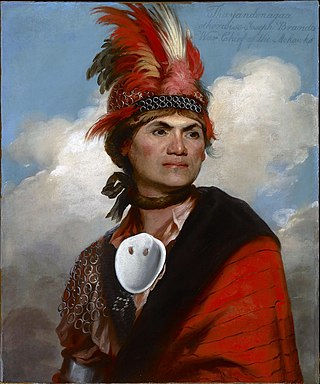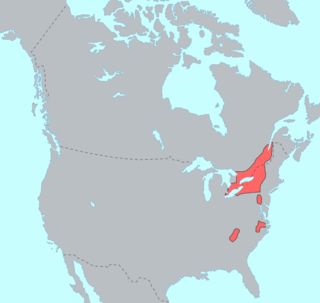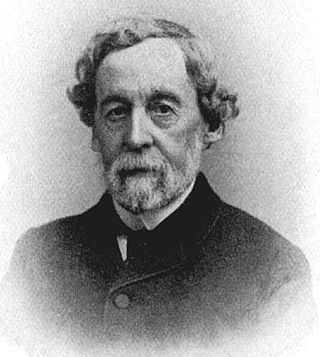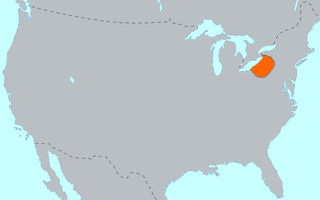Career
Snow began his professional career in archeological research in 1966 at the University of Maine, and established the first university-based archaeological research program in the state of Maine. Thereafter he continued to pursue his career at the University at Albany, SUNY, in upstate New York, where he spent the next twenty-six years. [3] During this time he served as Professor of Anthropology and Chair of the Department of Anthropology, and Associate Dean of the College of Social and Behavioral Sciences. [7]
Snow is known for his research into the paleodemography of prehistoric populations in the highlands of Mexico, New England, New York and the British Isles. His works include a new edition of Archaeology of Native North America, co-authored with Nancy Gonlin and Peter Siegel, published in 2019. [6] Snow has conducted archeological explorations and research in north-eastern United States, and in Spain and France. [1]
While in New York Snow conducted archaeological field investigations and excavations for the Park Service at the Saratoga battlefield from 1972 to 1977 in preparation for the 1977 bicentennial of the battle. [3] Under the supervision of Snow, archeological teams from the State University of New York, at Albany, conducted one of the first extensive mapping operations at any major historic battlefield in the United States. Snow relied heavily upon low altitude aerial photographs, covering an area of approximately ten square miles, [8] from which he used to construct a series of base maps that outlined earthworks, roads, and hidden foundations of old structures that existed at the time of the battles. In order to verify the identify of the various structures Snow performed numerous archeological diggings in and around the battlefield, and in the process unearthed a number of artifacts, along with two human skeletons found at the location of the British redoubts that once existed. [9] Snow's archaeological excavations and his research provided the basis for his 1977 work, Archaeological Atlas of the Saratoga Battlefield, which includes 38 maps which uses a grid system of squares of 1000 x 1000 feet. Snow had originally wanted to use the metric system by instead used the English system of measurement as the latter was employed because the base maps used this system, [10] as did the various map makers who outlined the battlefield in 1777. [11] Snow also wrote an account of the project and his discoveries, in context with the actual battles, in his 2016 work, 1777: Tipping point at Saratoga. [12] [lower-alpha 1]
In 1977, given his extensive archeological research and works involved with the Indian nations of north-eastern United States, and the Indians of Maine in particular, [4] the U.S. Department of Justice asked Dr. Snow for his assistance as a historical consultant in the preparation of their case on behalf of the Penobscot and Passamaquoddy Indian tribes involving land claims they had made against the State of Maine. At that time the case was considered one of the largest such claims ever made in the United States. [13]
Beginning in 1982 Snow initiated The Mohawk Valley Project, which involved excavations and field investigations that continued over a 13 year period. [2] The project was conceived in 1980 during discussions between Snow, and fellow archeologist William A. Starna. [lower-alpha 2] Starna provided valuable assistance to Snow during the first two projects, proving crucial to the project's long term success. [14] To finance such an extensive project Snow received funding from the National Endowment for the Humanities, the National Science Foundation, the National Geographic Society, and other such agencies. The undertaking involved twelve different projects involving site excavations and field testing along the Mohawk Valley. The project included excavations at the Caughnawaga Indian Village Site, Cayadutta, Caughnawaga Indian Village Site, Otstungo, and other locations along the Mohawk Valley and its river. The entire project proved to be the largest undertaking of Snow's career. [2]
From 1989 to 1991 Snow was Professor of Anthropology and Chair of the Department of Anthropology at the University at Albany. In 1995 Snow continued his career at Pennsylvania State University, and served as head of the department of anthropology for ten years [15]
Snow has developed techniques for distinguishing male from female hand-prints in caves and other archeological sites found around the world. The technical aspects of this research are outlined and charted in Snow's 2013 work. [16] His techniques have focused on examples found in the Upper Paleolithic caves in France and Spain, while his techniques have also been employed by others at archeological sites in North America and elsewhere. [16] [17] [lower-alpha 3]
During his career Snow has received numerous awards and honors, including the National Defense Education Act Fellowship for graduate study in anthropology, Senior Scholar Fellowship, Dumbarton Oaks, Washington, D. C, and the Award for Service as President, Society for American Archaeology. [7]

Among the Haudenosaunee the Great Law of Peace, also known as Gayanashagowa, is the oral constitution of the Iroquois Confederacy. The law was written on wampum belts, conceived by Dekanawidah, known as the Great Peacemaker, and his spokesman Hiawatha. The original five member nations ratified this constitution near modern-day Victor, New York, with the sixth nation being added in 1722.

The Mohawk people are in the easternmost section of the Haudenosaunee, or Iroquois Confederacy. They are an Iroquoian-speaking Indigenous people of North America, with communities in southeastern Canada and northern New York State, primarily around Lake Ontario and the St. Lawrence River. As one of the five original members of the Iroquois League, the Mohawk are known as the Keepers of the Eastern Door – the traditional guardians of the Iroquois Confederation against invasions from the east.

The Beaver Wars, also known as the Iroquois Wars or the French and Iroquois Wars were a series of conflicts fought intermittently during the 17th century in North America throughout the Saint Lawrence River valley in Canada and the Great Lakes region which pitted the Iroquois against the Hurons, northern Algonquians and their French allies. As a result of this conflict, the Iroquois destroyed several confederacies and tribes through warfare: the Hurons or Wendat, Erie, Neutral, Wenro, Petun, Susquehannock, Mohican and northern Algonquins whom they defeated and dispersed, some fleeing to neighbouring peoples and others assimilated, routed, or killed.

Samuel Kirkland was a Presbyterian minister and missionary among the Oneida and Tuscarora peoples of present-day central New York State. He was a long-time friend of the Oneida chief Skenandoa.

The Iroquoian languages are a language family of indigenous peoples of North America. They are known for their general lack of labial consonants. The Iroquoian languages are polysynthetic and head-marking.

The Algonquians are one of the most populous and widespread North American native language groups. They historically were prominent along the Atlantic Coast and in the interior regions along Saint Lawrence River and around the Great Lakes. This grouping consists of the peoples who speak Algonquian languages.

Horatio Emmons Hale was an American-Canadian ethnologist, philologist and businessman. He is known for his study of languages as a key for classifying ancient peoples and being able to trace their migrations.
The Great Peacemaker, sometimes referred to as Deganawida or Tekanawí:ta was by tradition, along with Jigonhsasee and Hiawatha, the founder of the Haudenosaunee, commonly called the Iroquois Confederacy. This is a political and cultural union of six Iroquoian-speaking Native American tribes governing parts of the present-day state of New York, northern Pennsylvania, and the eastern portion of the provinces of Ontario, and Quebec Canada, recognized as sovereign by both the USA and Canada.
William N. Fenton was an American scholar and writer known for his extensive studies of Iroquois history and culture. He started his studies of the Iroquois in the 1930s and published a number of significant works over the following decades. His final work was published in 2002. During his career, Fenton was director of the New York State Museum and a professor of anthropology at the State University of New York.

The Erie people were Indigenous people historically living on the south shore of Lake Erie. An Iroquoian group, they lived in what is now western New York, northwestern Pennsylvania, and northern Ohio before 1658. Their nation was almost exterminated in the mid-17th century by five years of prolonged warfare with the powerful neighboring Iroquois for helping the Huron in the Beaver Wars for control of the fur trade. Captured survivors were adopted or enslaved by the Iroquois.

Auriesville is a hamlet in the northern part of New York state and west of Albany. It was the site of Ossernenon, a Mohawk village where French Jesuits established a mission. This operated from 1667 until 1684, when the Mohawk destroyed it as part of continuing confrontations with French colonists. Auries is said to have been the name of the last Mohawk known to have lived there. Later settlers named the village after him.

Laurentian, or St. Lawrence Iroquoian, was an Iroquoian language spoken until the late 16th century along the shores of the Saint Lawrence River in present-day Quebec and Ontario, Canada. It is believed to have disappeared with the extinction of the St. Lawrence Iroquoians, likely as a result of warfare by the more powerful Mohawk from the Haudenosaunee or Iroquois Confederacy to the south, in present-day New York state of the United States.
The St. Lawrence Iroquoians were an Iroquoian Indigenous people who existed from the 14th century to about 1580. They concentrated along the shores of the St. Lawrence River in present-day Quebec and Ontario, Canada, and in the American states of New York and northernmost Vermont. They spoke Laurentian languages, a branch of the Iroquoian family.

The Petun, also known as the Tobacco people or Tionontati, were an indigenous Iroquoian people of the woodlands of eastern North America. Their last known traditional homeland was south of Lake Huron's Georgian Bay, in what is today's Canadian province of Ontario.

The Iroquois, also known as the Five Nations, and later as the Six Nations from 1722 onwards; alternatively referred to by the endonym Haudenosaunee are an Iroquoian-speaking confederacy of Native Americans and First Nations peoples in northeast North America. They were known by the French during the colonial years as the Iroquois League, and later as the Iroquois Confederacy, while the English simply called them the "Five Nations". The peoples of the Iroquois included the Mohawk, Oneida, Onondaga, Cayuga, and Seneca. After 1722, the Iroquoian-speaking Tuscarora people from the southeast were accepted into the confederacy, from which point it was known as the "Six Nations".
Erminie Wheeler-Voegelin was an American award-winning anthropologist, folklorist, and ethnohistorian.

Caughnawaga Indian Village Site is an archaeological site located just west of Fonda in Montgomery County, New York. It is the location of a 17th-century Mohawk nation village. One of the original Five Nations of the Iroquois League, or Haudenosaunee, the Mohawk lived west of Albany and occupied much of the Mohawk Valley. Other Iroquois nations were located west of them and south of the Great Lakes.

The Iroquoian peoples are an ethnolinguistic group of peoples from eastern North America. Their traditional territories, often referred to by scholars as Iroquoia, stretch from the mouth of the St. Lawrence River in the north, to modern-day North Carolina in the south.
Elisabeth Jane Tooker was an American anthropologist and a leading historian on the Iroquois nations in north-eastern United States.
William A. Starna, is Professor Emeritus of Anthropology, at the State University of New York College at Oneonta. Starna has written and edited many books and journal articles, largely devoted to the archeology and history of the Mohawk and Iroquois Indian Nations in upstate New York and related colonial American history. Starna specializes in studying the Iroquoian and Algonquian peoples. He has also devoted much time to the study of the relationships that existed between the Indian nations and federal and state governments during the revolutionary era, and to the study of Epistemology.










